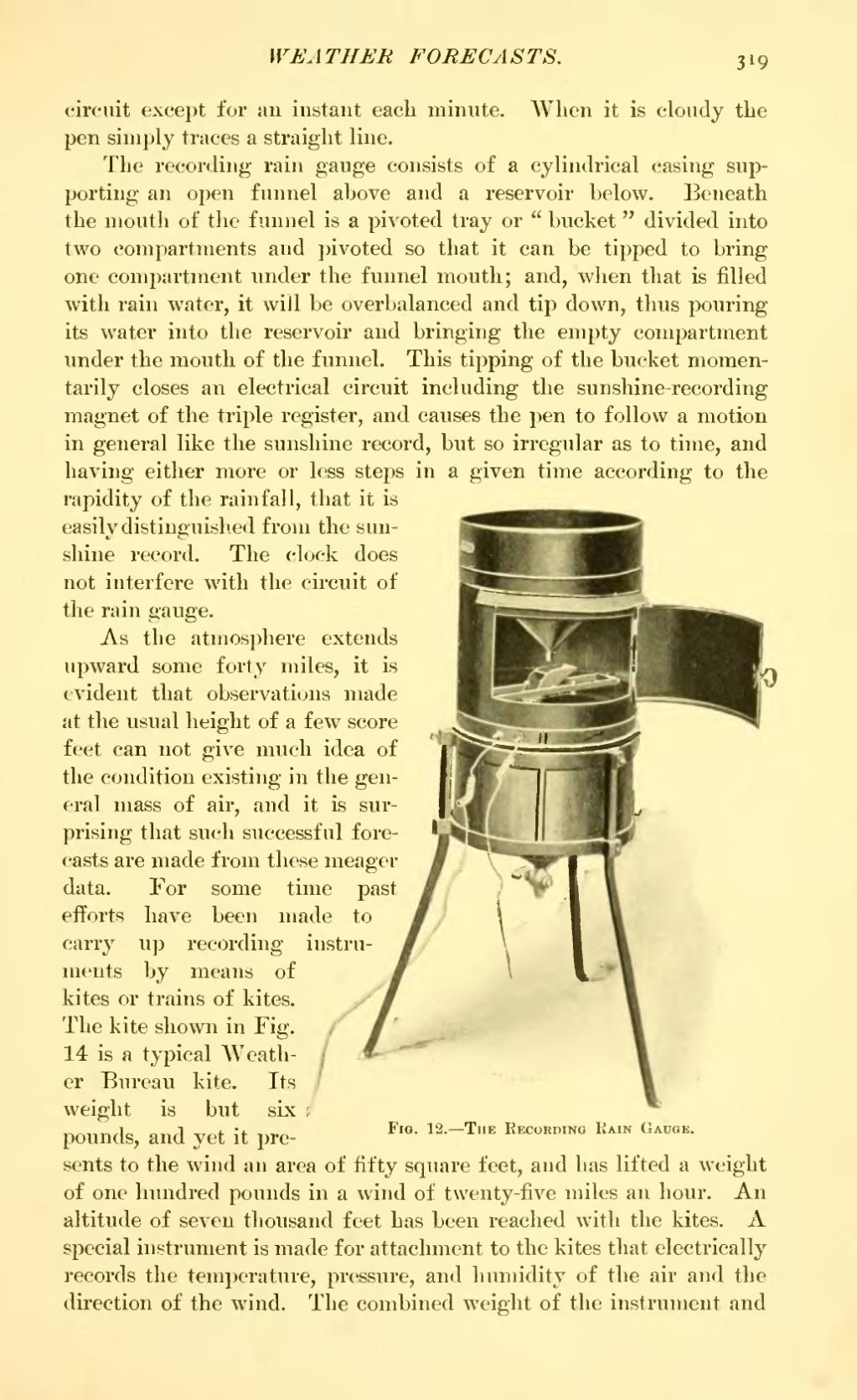circuit except for an instant each minute. When it is cloudy the pen simply traces a straight line.
The recording rain gauge consists of a cylindrical casing supporting an open funnel above and a reservoir below. Beneath the mouth of the funnel is a pivoted tray or "bucket" divided into two compartments and pivoted so that it can be tipped to bring one compartment under the funnel mouth; and, when that is filled with rain water, it will be overbalanced and tip down, thus pouring its water into the reservoir and bringing the empty compartment under the mouth of the funnel. This tipping of the bucket momentarily closes an electrical circuit including the sunshine-recording magnet of the triple register, and causes the pen to follow a motion in general like the sunshine record, but so irregular as to time, and having either more or less steps in a given time according to the rapidity of the rainfall, that it is  Fig. 12.—The Recording Rain Gauge. easily distinguished from the sunshine record. The clock does not interfere with the circuit of the rain gauge.
Fig. 12.—The Recording Rain Gauge. easily distinguished from the sunshine record. The clock does not interfere with the circuit of the rain gauge.
As the atmosphere extends upward some forty miles, it is evident that observations made at the usual height of a few score feet can not give much idea of the condition existing in the general mass of air, and it is surprising that such successful forecasts are made from these meager data. For some time past efforts have been made to up recording instruments of kites or trains of kites. The kite shown in Fig. 14 is a typical Weather Bureau kite. Its weight is but six pounds, and yet it presents to the wind an area of fifty square feet, and has lifted a weight of one hundred pounds in a wind of twenty-five miles an hour. An altitude of seven thousand feet has been reached with the kites. A special instrument is made for attachment to the kites that electrically records the temperature, pressure, and humidity of the air and the direction of the wind. The combined weight of the instrument and
